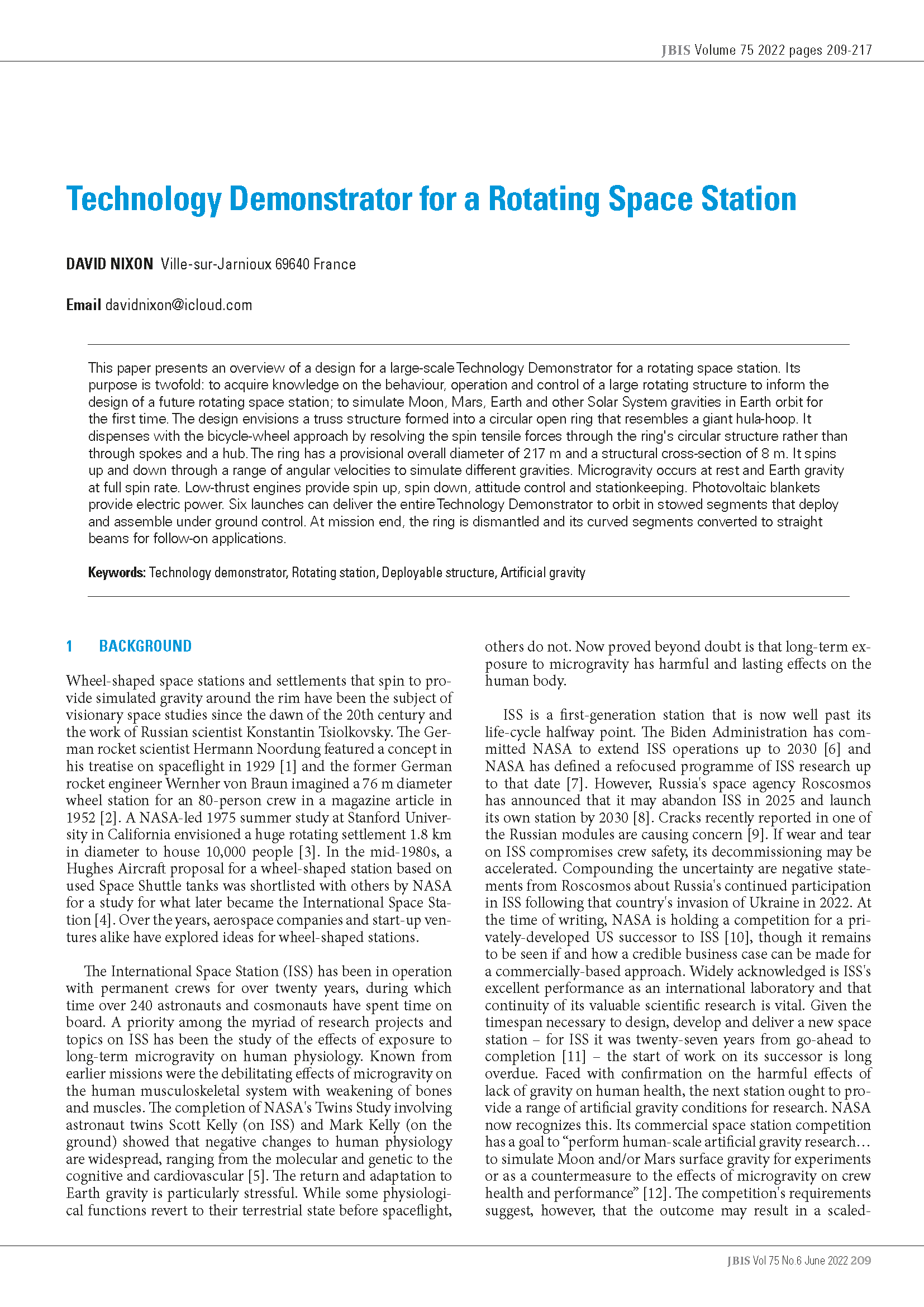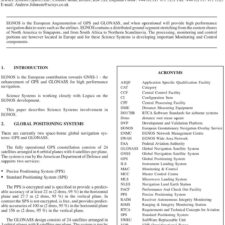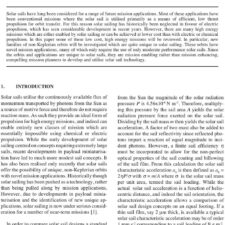Technology Demonstrator for a Rotating Space Station
£5.00
David Nixon (2022), JBIS, 75, pp.209-217
Refcode: 2022.75.209
DOI: n/a
Abstract:
This paper presents an overview of a design for a large-scale Technology Demonstrator for a rotating space station. Its purpose is twofold: to acquire knowledge on the behaviour, operation and control of a large rotating structure to inform the design of a future rotating space station; to simulate Moon, Mars, Earth and other Solar System gravities in Earth orbit for the first time. The design envisions a truss structure formed into a circular open ring that resembles a giant hula-hoop. It dispenses with the bicycle-wheel approach by resolving the spin tensile forces through the ring’s circular structure rather than through spokes and a hub. The ring has a provisional overall diameter of 217 m and a structural cross-section of 8 m. It spins up and down through a range of angular velocities to simulate different gravities. Microgravity occurs at rest and Earth gravity at full spin rate. Low-thrust engines provide spin up, spin down, attitude control and stationkeeping. Photovoltaic blankets provide electric power. Six launches can deliver the entire Technology Demonstrator to orbit in stowed segments that deploy and assemble under ground control. At mission end, the ring is dismantled and its curved segments converted to straight beams for follow-on applications.
Keywords: Technology demonstrator, Rotating station, Deployable structure, Artificial gravity





